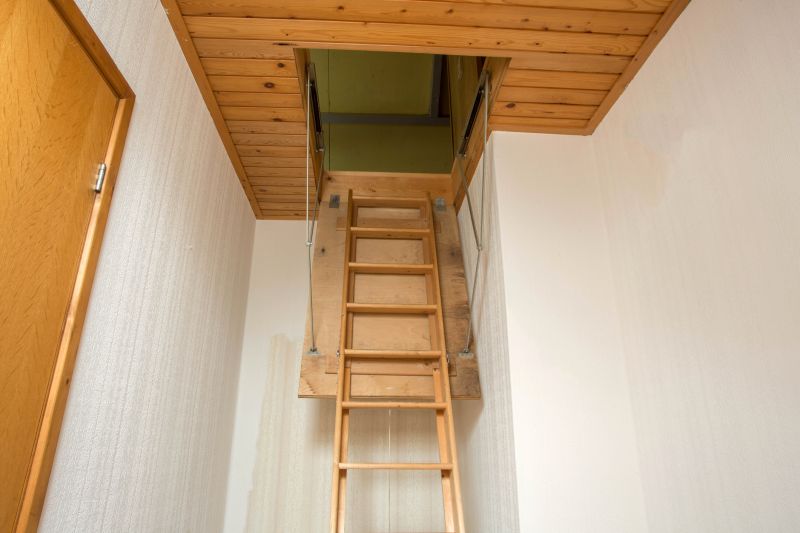Popular Attic Ladder Replacement Options For Safe And Convenient Access
Explore a wide selection of attic ladder replacements that combine safety features with user-friendly design for everyday convenience.
 Replacing an attic ladder involves selecting the right type of product to ensure safety, durability, and ease of installation. Attic ladder replacements come in various styles, materials, and configurations to suit different attic heights, access needs, and aesthetic preferences. When considering a replacement, it is important to evaluate the space available, the weight capacity, and whether the ladder will be fixed or retractable. Proper measurement and understanding of the existing opening are crucial to ensure a good fit and safe operation.
Replacing an attic ladder involves selecting the right type of product to ensure safety, durability, and ease of installation. Attic ladder replacements come in various styles, materials, and configurations to suit different attic heights, access needs, and aesthetic preferences. When considering a replacement, it is important to evaluate the space available, the weight capacity, and whether the ladder will be fixed or retractable. Proper measurement and understanding of the existing opening are crucial to ensure a good fit and safe operation.
Top Overall Option
Universal Attic Ladder
The Universal Attic Ladder offers a versatile and reliable solution suitable for a wide range of attic spaces. Designed with durable materials and adjustable features, it provides a secure and stable access point. Its easy installation process and compatibility with standard openings make it a popular choice for homeowners seeking a practical replacement option.
Types of Products For Attic Ladder Replacements
Folding Attic Ladders
Compact and space-saving, folding attic ladders are designed to fold neatly into the ceiling when not in use, making them ideal for areas with limited headroom.
Extension Attic Ladders
Extension ladders can be adjusted to various heights, providing flexible access for attics with higher ceilings or irregular openings.
Telescoping Attic Ladders
Telescoping ladders feature nested steps that extend and retract smoothly, offering convenient storage and adjustable height options.
Fixed Attic Ladders
Fixed ladders are permanently installed and typically constructed from durable materials for continuous access to attic spaces.
Insulated Attic Ladders
Designed with insulation features, these ladders help maintain energy efficiency by reducing heat transfer between the attic and living spaces.
Retractable Attic Ladders
Retractable models fold into the ceiling or wall cavity, providing a sleek and unobtrusive access point when not in use.
Aluminum Attic Ladders
Lightweight and resistant to corrosion, aluminum ladders are easy to handle and suitable for frequent use.
Wooden Attic Ladders
Traditional and aesthetically pleasing, wooden ladders blend well with home interiors and can be customized to match decor.
Steel Attic Ladders
Offering exceptional strength and durability, steel ladders are suitable for heavy-duty applications and high-traffic areas.
Ladder with Handrails
Enhanced safety with integrated handrails provides additional support during ascent and descent.
Ladders with Safety Locks
Safety locks prevent accidental collapsing, ensuring secure access at all times.
Ladders with Insulation Panels
Includes panels that improve energy efficiency by sealing the opening against drafts and heat transfer.
Popular Choices
Ideal for small spaces, these ladders fold away neatly when not in use, providing quick and easy access.
Flexible height options make these ladders suitable for a variety of attic configurations.
Lightweight and easy to extend, these ladders are favored for their portability and convenience.
Designed for durability, these ladders support higher weight capacities and frequent use.
Combining insulation with retractable design, these models help conserve energy while maintaining a sleek look.
Models equipped with safety locks, handrails, and anti-slip steps are popular for enhanced security.
Popular for their classic appearance and ease of customization, wooden ladders suit many home styles.
Designed to fold into the ceiling cavity, these ladders maximize available space in compact areas.
Many replacement options are designed to be compatible with standard attic openings, but some may require modifications or custom fitting. Materials such as aluminum, wood, and steel are common, each offering different benefits in terms of weight, strength, and appearance. For instance, aluminum ladders are lightweight and resistant to corrosion, making them suitable for frequent use, while wooden ladders can blend seamlessly with traditional home interiors.
Installation complexity varies among different products. Some attic ladder replacements are straightforward and can be installed with basic tools, while others may require professional assistance to ensure safety and compliance with building codes. Additionally, features like insulation, soundproofing, and safety locks can enhance the functionality and security of the ladder. It is advisable to review product specifications carefully and consider the long-term maintenance requirements.
Choosing the right attic ladder replacement can improve accessibility and safety while maintaining the aesthetic appeal of your home. Whether you are upgrading an existing ladder or installing a new one, understanding the available options and their features can help you make an informed decision tailored to your specific needs.
Key Buying Considerations
- Measure the attic opening accurately to ensure compatibility with the replacement ladder.
- Determine the maximum weight capacity needed for safe access, especially if carrying heavy items.
- Decide between fixed, retractable, folding, or telescoping designs based on space and usage frequency.
- Choose materials that match your aesthetic preferences and durability requirements, such as aluminum, wood, or steel.
- Evaluate ease of installation – some models are DIY-friendly, while others may require professional help.
- Consider insulation features if energy efficiency and temperature control are priorities.
- Check safety features like handrails, locking mechanisms, anti-slip steps, and safety locks.
- Assess the ladder's height adjustment capabilities to accommodate different attic ceiling heights.
- Review product dimensions and clearance requirements to ensure proper fit and operation.
- Look into additional features such as soundproofing, corrosion resistance, and ease of maintenance.
- Read customer reviews and ratings to gauge real-world performance and reliability.
- Verify compliance with local building codes and safety standards.
- Determine the level of portability if you need to remove or reposition the ladder periodically.
- Budget appropriately, considering both initial cost and long-term durability.
